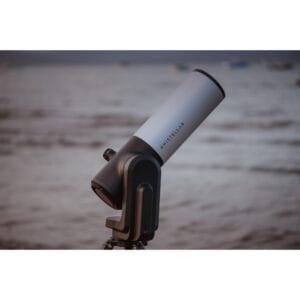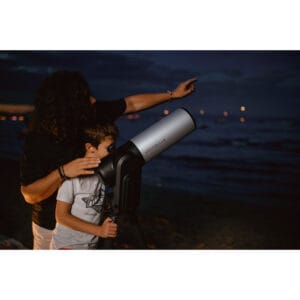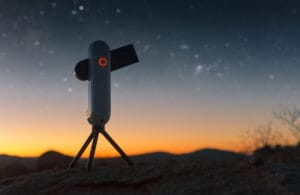Seeing Uranus through a telescope is a unique experience that’s only possible with some preparation and the right equipment. This ice giant is much farther away than familiar planets like Jupiter or Saturn, but with a good telescope, you can still distinguish it from background stars.
What Do You See when Looking at Uranus through a Telescope?

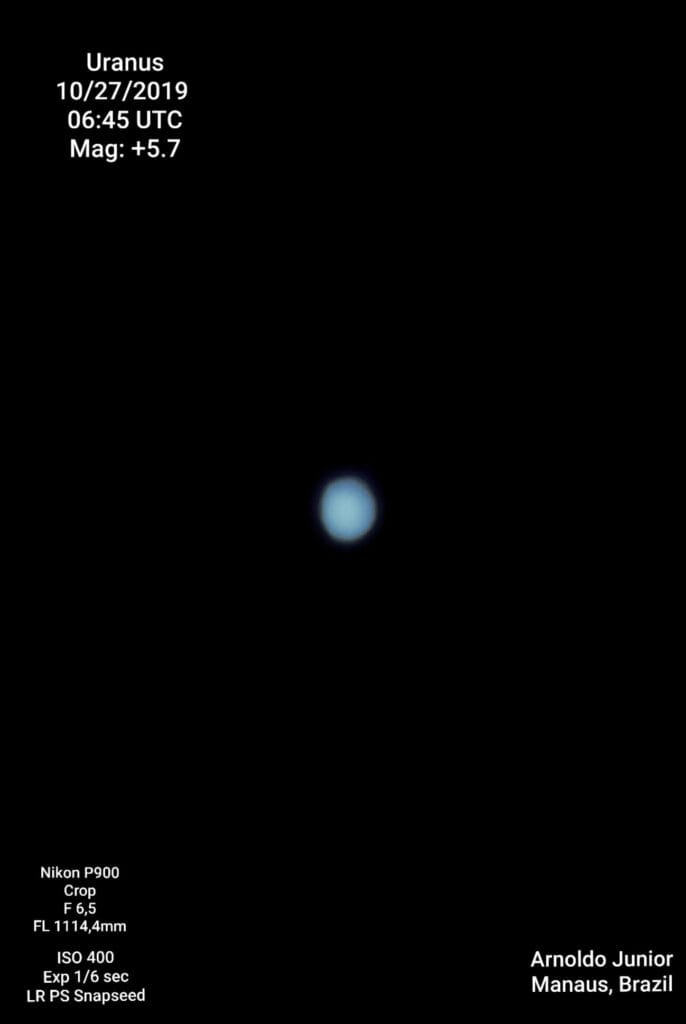
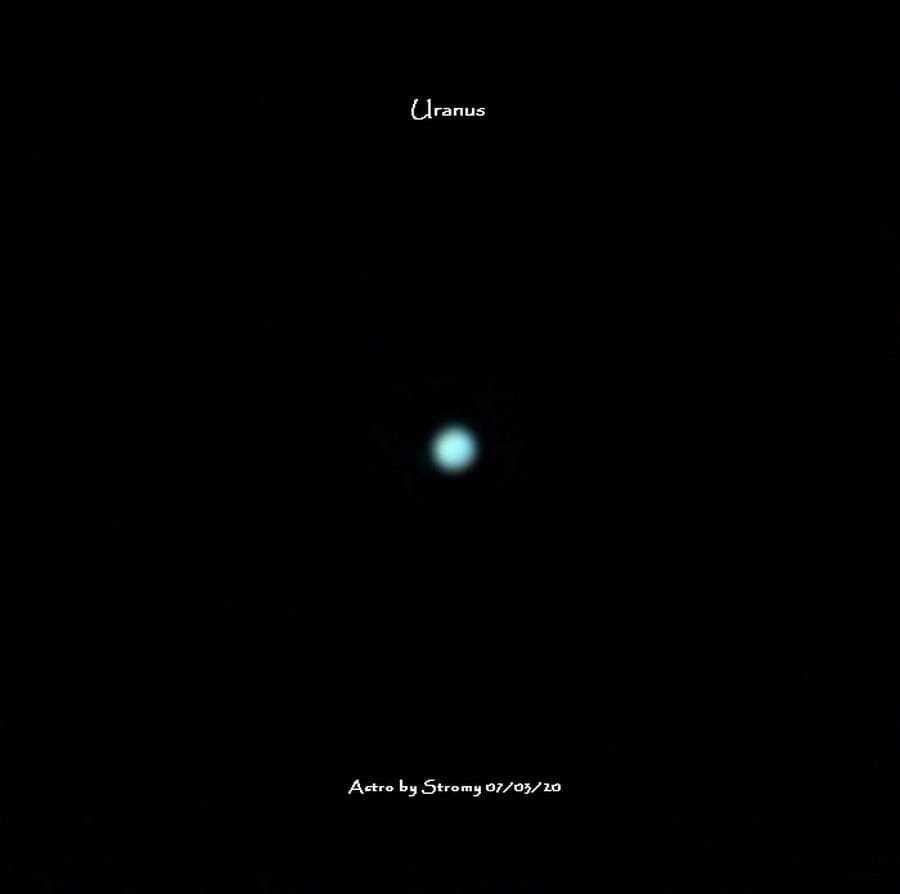
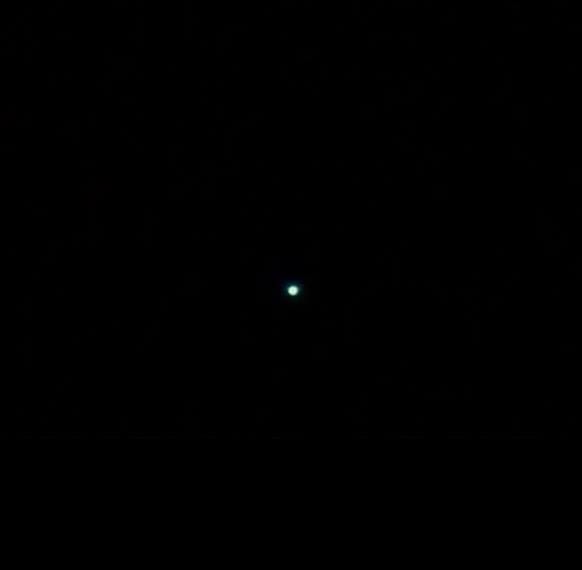
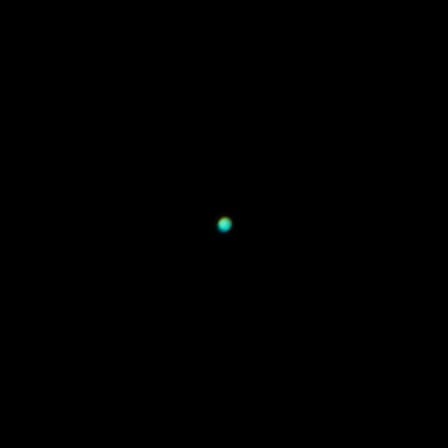
Uranus appears as a small, uniform blue-green disk. Due to its distance from Earth, it doesn’t appear much larger than a star, but at 100x to 150x magnification, its planetary disk becomes clearly visible. You’ll see:
✓ A pale blue-green color (due to methane gas in the atmosphere)
✓ A uniform, round disk without visible surface features
✓ With larger telescopes: the brightest moons like Titania and Oberon
✓ Under ideal conditions: subtle cloud bands or color variations
The blue-green color occurs because methane absorbs red light from sunlight. This gives Uranus its characteristic cyan tint. Note: even with larger telescopes, the surface remains almost uniform. This is because Uranus has a deep, dense atmosphere without strong contrasts.
When is the Best Time to See Uranus through a Telescope?
Around opposition, approximately once per year, Uranus is most visible. At this time, it’s directly opposite the sun in our sky, closest to Earth, and visible all night. During this period, you can find it in the constellation Pisces, Aries, or sometimes Taurus, depending on the year.
✓ Best period: August through March
✓ Brightness: magnitude around 5.7 (barely visible to the naked eye under very dark skies)
✓ Ideal location: place without light pollution, preferably with clear skies and low humidity
Use a star chart or an app like Stellarium to locate Uranus exactly. Without aids, it’s almost impossible to distinguish it from stars.
Do You Need a Telescope for Uranus?
Yes. Uranus is only visible to the naked eye under perfect conditions, and even then you’ll only see it as a faint “star”. A telescope makes it possible to actually recognize it as a planet. Recommended specifications:
✓ Minimum aperture: 60 mm (for recognizing the disk), available here
✓ Recommended aperture: 100-150 mm or more, available here
✓ Magnification: 100x-200x for a clear disk and visible moons
✓ Filters: blue or violet tints can enhance details, available here
✓ Mount: stable tripod or tracking mount is desirable, especially at high magnifications
Enthusiasts with 20-30 cm telescopes can, under ideal conditions, even faintly observe Uranus’s rings, though they are extremely faint: they reflect only 2% of sunlight. This makes them almost invisible to ordinary amateur telescopes.
What Makes Uranus so Special through a Telescope?
✓ Color: blue-green due to methane
✓ Rotation axis: tilted at an angle of 98 degrees – the planet essentially “rolls” along its orbit
✓ Moons: at least five larger moons are visible with medium to large telescopes
✓ Rings: present, but very faint and only visible with large telescopes at high magnification
Uranus was the first planet discovered with a telescope (by William Herschel in 1781). It hadn’t been recognized as a planet with the naked eye and permanently changed our view of the solar system.
How Do You Find Uranus through a Telescope?
- Use a planetarium app to find Uranus’s position (like Stellarium or SkySafari)
- Choose a clear night around opposition
- Use binoculars or an app to scan the correct constellation
- Set your telescope to low magnification (50x-80x) to find it
- Then increase magnification to 150x-200x for the best view
Note: Uranus moves slowly among the stars. Use star patterns or nearby bright stars (or simply an app) to recognize it more easily.
Conclusion
Seeing Uranus through a telescope is a reward for those who look beyond the familiar planets. The planet is subtle, mysterious, and just challenging enough to make it exciting. Don’t expect spectacular rings or storms like Jupiter’s, but rather a serene, blue-green world nearly 3 billion kilometers away. With a telescope of at least 60 mm, patience, and good preparation, Uranus is within reach. And fortunately, we have them in stock! View them here.
Want to know which telescope is suitable for planets like Uranus and its moons? Check out our stargazing guide for the right advice.


